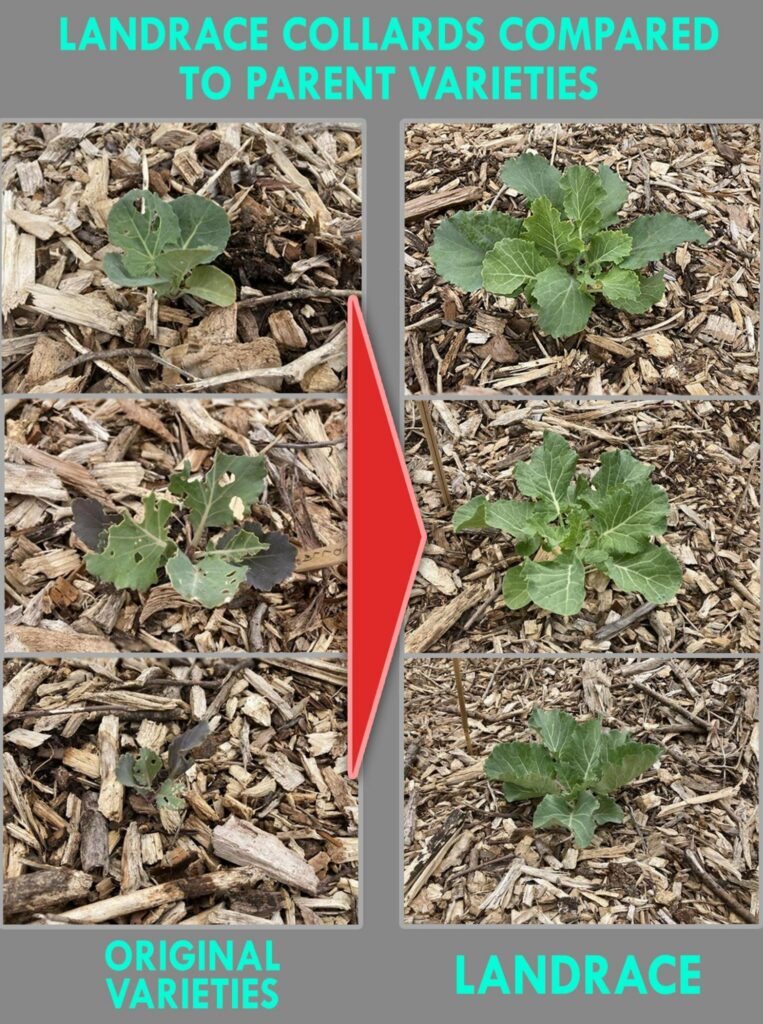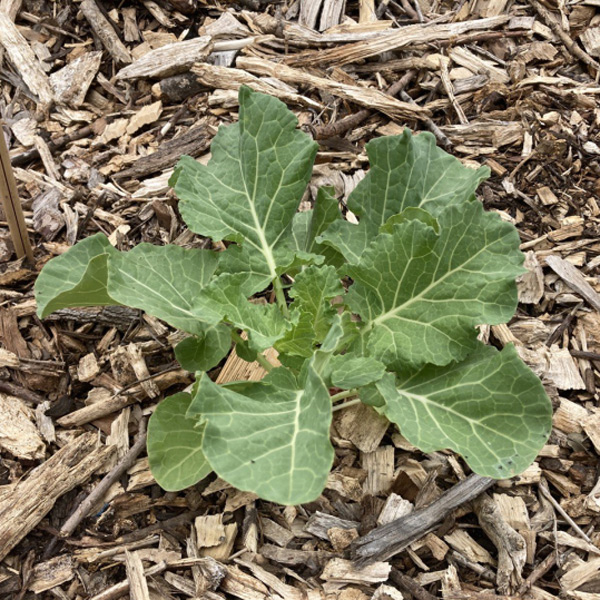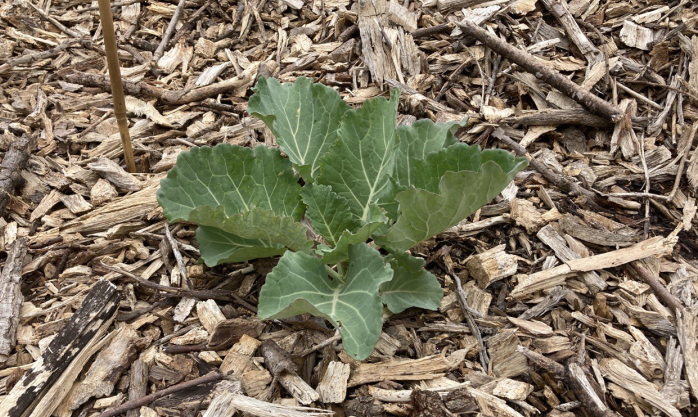Peter Dilley shares his success in crossing collards in order to create a landrace variety:
Creating Landrace Collards
Approximately 22 different “named retail store seed packets” went into the initial breeding of these landrace collards.
They have received:
1. The same exact start date
2. Grew in the same exact 1020 tray
3. Grew under the same exact grow lights over winter waiting for Spring.
4. Hardened off outside in the same exact 1020 tray
5. Transplanted into the same exact grown in adjacent rows.
6. Given the exact same watering schelde, or lack thereof
7. Given the exact same fertilizer, or lack thereof
8. Given the same exact Sun exposure and accumulated the same total of degrees F of sunlight.
9. Given the same exact number of Sprays of the same exact sprayer mix of organic caterpillar pesticide (Spinosad)
10. Photographed on the same exact day.
Results




4 comments
I have been planting the same Indian corn for a decade, saving the seeds (bought it from the marked-down decoration bin after Thanksgiving one year) and selecting for surviving in a marine climate and minimal watering. They do pretty good but sometimes I will get a stalk that grows tassels on the ears, like it is trying to go back to being teosinte. I think the corn can get overbred.
I know I am getting pollen from the neighbors’ sweet corn, and I have planted hominy corn from the bulk bin at the grocery store to see what it grows like, but to avoid overbred issues, I save and use about three years’ harvest of corn kernels each Spring to try avoid problems that might mean I lose the whole line. I keep some also in the freezer longer just in case.
I don’t run as big a plot as you, so I can sprout the kernels in a mason jar, like making bean sprouts, and individually plant. It is more labor but I don’t have holes to replant because three year old kernels don’t have as good a germination rate.
I wasn’t trying to make a landrace, by the way, originally I just liked the fact that the ears were pretty and the stalks grew ten feet tall. I later figured out how to make decent cornmeal.
That is awesome.
“I am starting to think that heirloom lines are meant to be crossed!”
Well how do you think we got the heirloom varieties in the first place? Weren’t they all developed by subsistence farmers attempting to create landraces for their local area?
There is certainly some truth to the idea that “classics never go out of style”, ie, heirloom varieties have persisted for generations *because* they are intrinsically valuable. But it’s a bit antithetical to assume that each heirloom plant was the *final* culmination of a focused breeding program, and since being achieved, has been frozen in time and perpetuated with perfect fidelity by every succeeding generation.
I suspect that there was a paradigm shift when we started outsourcing our farming to big corporate behemoths, and a lot of the old school horticulture mentality was lost. Agribusiness disrupted the cultural continuity between generations, and by the time we became disillusioned with indusitrialized food production, we had lost a lot of the ethos of our farming grandparents and great-grandparents.
So we have these romantic ideas about the heirloom varieties where we see them as perfected gene lines to be preserved, like old photographs or other relics of our ancestors, rather than as living genetic legacies (just like our own families) that need continual input of new genes to remain vital and resilient in a changing world.
Yes, a lot of people just treat them as precious end-products. That’s usually the case, in fact. Mixing them up is re-invigorating to worn-out inbred genes.
Comments are closed.